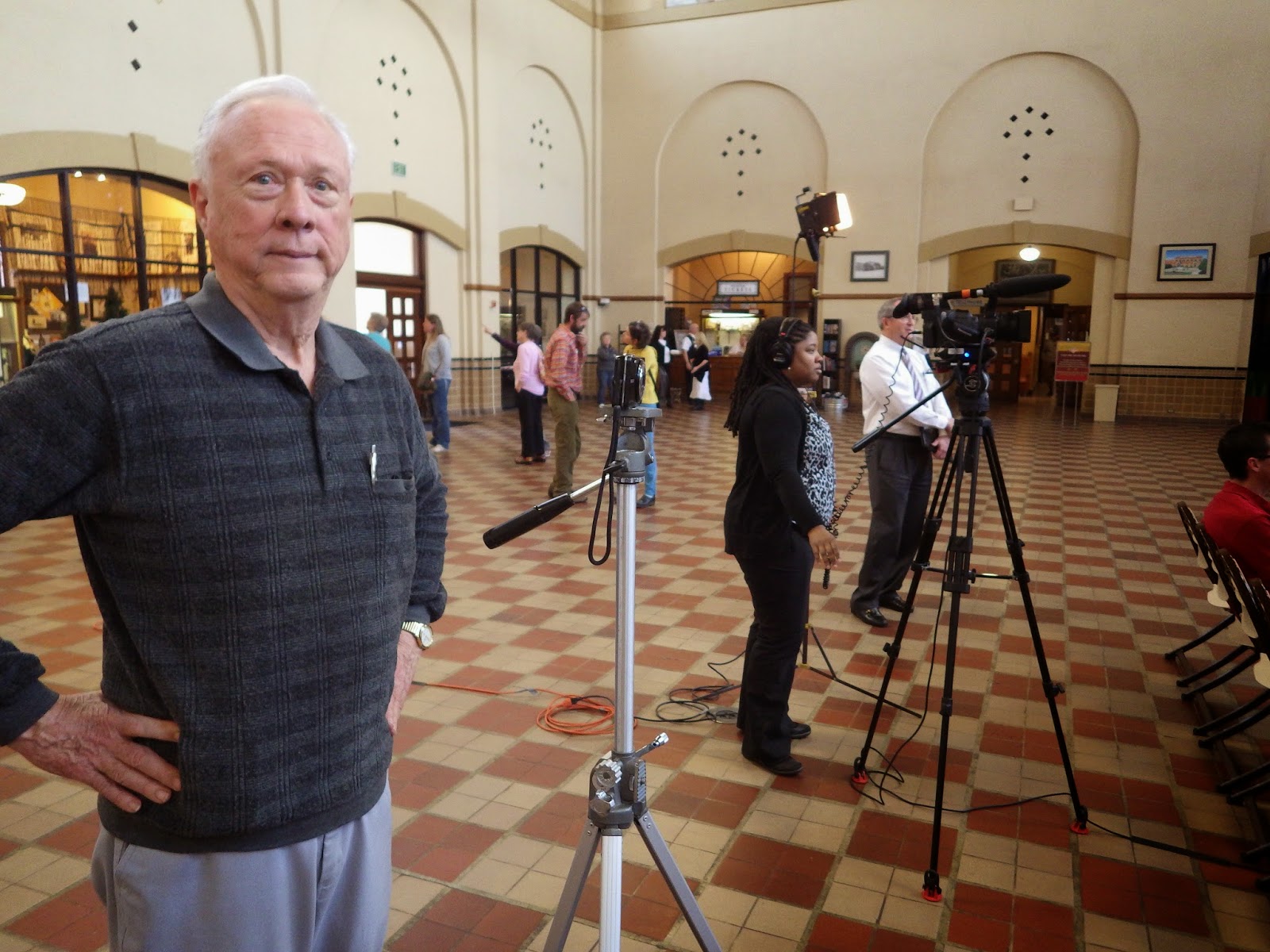
As we celebrate Union Station's 90th birthday this year, we're taking special note of one of the station's grandest moments and fondest memories: The Red Cross Canteen during World War II.
Union Station was the funnel through which Weber County's economy flowed, but during WWII the station took on another significant role. As the main connection for rails between east and west, it was a bye-station for millions of fighting men and women going off to war.
As many as 100 trains a day passed through, full of troops tired and hungry, so Ogden women anxious to do their part set up, and ran, a canteen serving coffee, beverages, sandwiches and, of course, donuts. The canteen was located right about where Union Grill's main dining room now sits.
WSU history student Lorri Rands has done a complete study of the canteen and will be presenting about it on May 10 during our observance of the station's 90 anniversary. One of her primary sources was the original Red Cross scrap books and some of the registers that we have in the Union Station Archive.

Lorri didn't just use those, of course. The Northern Utah Chapter of the American Red Cross also has records, and she even went to Washington D.C. Her presentation, about the love and dedication of nearly 200 women from Ogden serving our troops, is a thrill to watch.
So, what I thought I'd do here is pass on some of the recipes that used in the canteen. I found them in the scrapbook in a small booklet about running a Red Cross canteen. If you want to give them a try, keep in mind that they're made to served dozens of hungry soldiers. In addition to cookies, which you'd expect, who knew that our boys were getting ready to fight on diet of carrot and honey sandwiches?
They must have worked, because we won. At the end of the war, the canteen had served more than 1.7 million troops. One was a soldier who got off the train, looked around and realized he was in his hometown, Ogden, and went and got served a cup of coffee by his own mother.
And some of these yummie cookies? I sure like to think so.
From a list of "Cookies for Rookies"
TOP SERGEANT (top rank for appetite appeal)
1/2 cup butter
1 cup white corn syrup
1 egg
1/2 tsp ground cinnamon
1 tsp vanilla
2 1/2 cups flour
1/2 cup chopped raisins or dates
1/2 tsp salt
1/2 tsp baking soda
1 tsp baking powder
1/2 cup chopped nut meats.
1 cup unsweetened apple sauce
Cream butter or shortening with white corn syrup, egg, cinnamon and vanilla. Sift together flour, salt, baking soda and baking powder. Alternate adding this to the creamed mixture, with the apple sauce--fold in chopped nut meats and raisins or dates, dro from a spoon onto a greased cookie sheet--bake in 350 oven. This makes 50-60 medium sized cookies.

ATTENTION (These will attract it every time)
3/4 cup butter or shortening
1 cup molasses
1 cup brown sugar
1 egg
3 1/2 cup hot water
4 cups flour
1/2 tsp salt
1 tsp baking soda
1 tsp cinnamon
1/4 tsp ground ginger
1 tsp vanilla
1/2 cup chopped nut meats or raisins.
Cream butter or vegetable shortening with molasses, brown sugar and egg. adding hot water. Stir well and add these dry ingredients which have been sifted together: flour, salt, baking soda and ground ginger. Blend well. Add cinnamon and vanilla, also chopped nut meats or raisins if desired. Drop from a teaspoon onto a greased pan, bake in 350 oven until done. Before baking this dough may be chilled slightly, rolled and cut into any desired shape.
OATMEAL COOKIES
4 cups raisins, cover with water, boil 10 minutes, cool.
8 cups oatmeal
8 cups flour
2 level teaspoons baking powder
2 level teaspoons soda
2 level teaspoons salt
4 level teaspoons cinnamon
2 level teaspoons allspice
1 level teaspoon nutmeg
4 cups sugar
Mix dry ingedients. Add four cups shortening. Mix well. Add 12 eggs, 24 tablespoons water from raisins, and raisins. Drop from spoon on greased pan far enough apart to allow for spreading.
SUGAR COOKIES
2 cups sugar
1 cup shortening
1 cup sour cream or buttermilk
1 teaspoon soda
3 eggs
1 teaspoon vanilla
Enough flour to make a dough, and roll out.

PEANUT BUTTER AND HONEY SANDWICH
Diluted honey--3 cups honey to 1 1/2 cups hot water, bring to boil, place in jars labeled for use.
3 cups peanut butter and 1 1/2 cups diluted honey. Spread on bread for sandwiches, cut square across to distinguish from meat sandwiches. Use all the bread. Crusts placed so men may see them, when placed on trays, are often preferred by men.
PEANUT BUTTER AND CARROT SANDWICH
5 medium sized fresh carrots, grated, salt to taste, add one can morning milk, 1 large jar peanut butter. Stir smooth , do not beat. Spread as above for sandwiches.
CHEESE AND CARROT SANDWICH
Grated American cheese may be substituted in above for peanut butter. Use equal amounts of cheese and carrot. Add two tablespoons mustard spread.










































